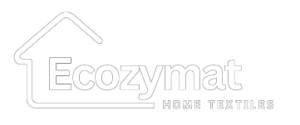China is the leading exporter of synthetic fiber blankets globally in 2022, and the most common types of synthetic fiber blankets are fleece blanets, flannel blankets, polar fleece blankets, sherpa blanket, mink blankets, faux fur blankets and knit blankets.
Overview of China’s Synthetic Fiber Blanket Exports in 2022.
According to statistics from the General Administration of Customs of the People’s Republic of China, China’s total export value of Blankets and travelling rugs of synthetic fiber (HS code: 630140) in 2022 was USD 3.664 billion.

China is the largest exporter of Synthetic Fiber Blankets and also the principal exporter to the top six importing countries of this product, according to data from the UN COMTRADE DATABASE in 2022.
Table 1 – Top Ten Countries by Total EXPORT Value of Synthetic Fiber Blankets in 2022.
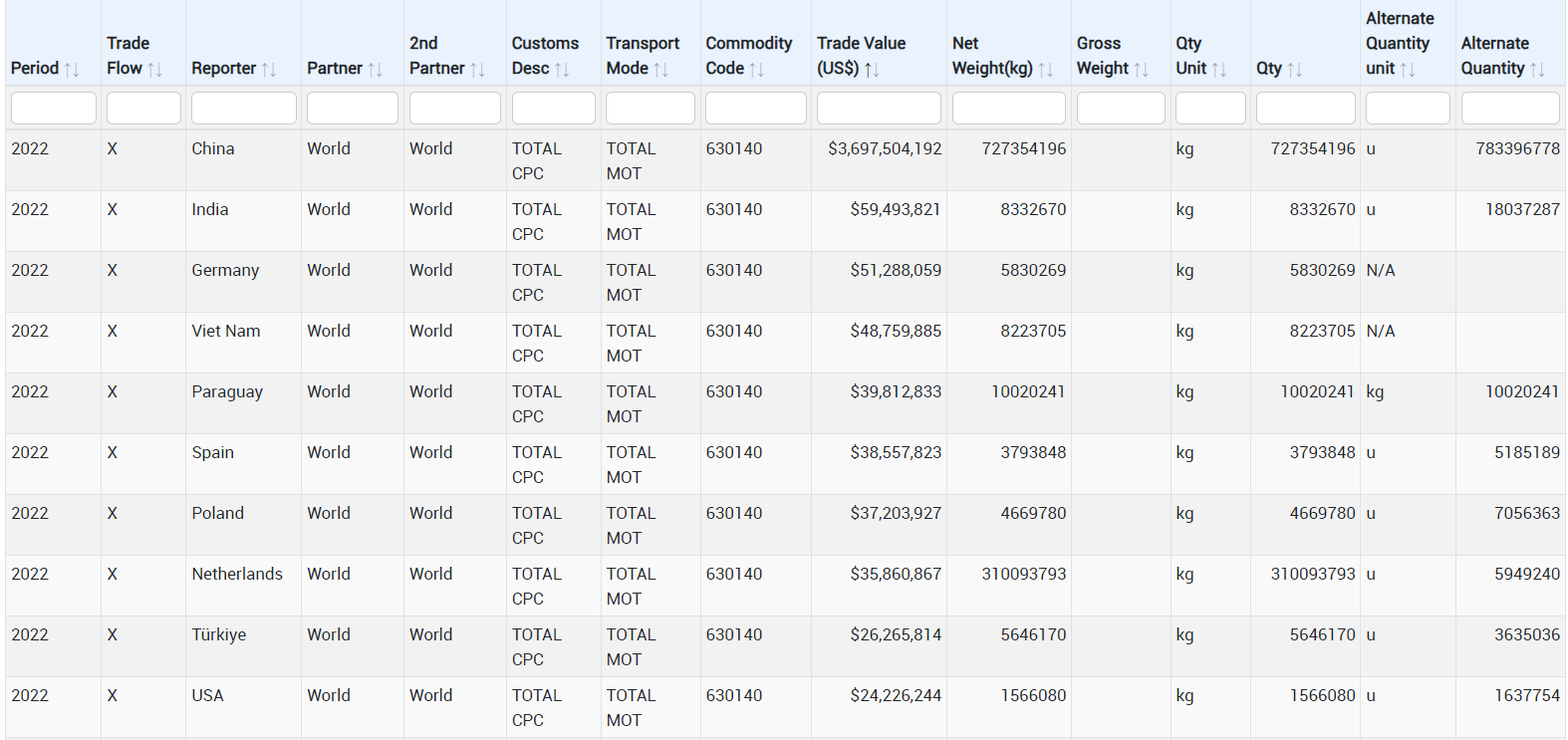
Table 2 – Top Ten Countries by Total IMPORT Value of Synthetic Fiber Blankets in 2022.

Table 3 – Top 10 Countries Importing Synthetic Fiber Blankets from China in 2022.
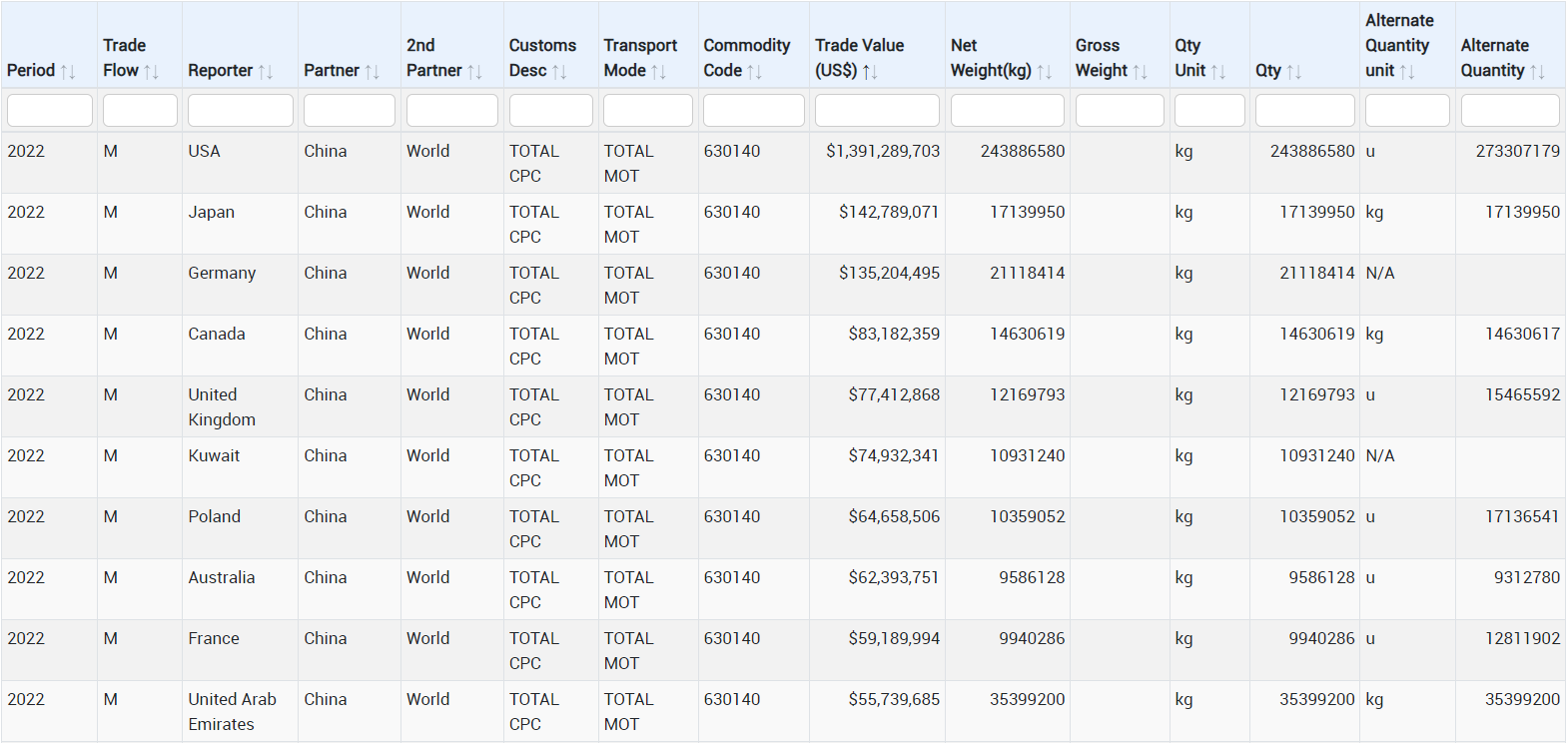
We can observe that the United States and Japan import over 90% of their synthetic fiber blankets from China in terms of value, while for Germany, Canada, and the United Kingdom, this figure also exceeds 80%.

Seven Most Common Types of Synthetic Fiber Blankets Exported from China.
Fleece Blankets
Appearance: Fleece blankets often have a smooth, slightly brushed appearance with a bit of a sheen. They come in a wide variety of colors and may include patterns or prints.
Feel: They are soft to the touch, lightweight, and have a comforting feel, making them ideal for everyday use.
Warmth: Fleece provides excellent insulation, keeping you warm without feeling heavy.
Breathability: Generally, fleece is breathable, allowing moisture to evaporate while retaining heat.
Flannel Blankets
Appearance: Flannel has a slightly napped texture, often with a checkered or plaid pattern, known for its casual and cozy look.
Feel: Known for its softness and slightly brushed feel, flannel provides a comfortable, cozy embrace.
Warmth: Flannel is warm, suitable for cooler climates or seasons, often used in winter bedding.
Breathability: It offers moderate breathability with good warmth retention, balancing coziness with comfort.
Polar Fleece Blankets
Appearance: Polar fleece typically has a thicker pile than regular fleece, with a soft, inviting texture. It’s available in many colors and patterns.
Feel: It is extra soft and plush compared to regular fleece, providing a cozy and comfortable feel.
Warmth: Known for its high insulating capabilities, polar fleece offers superior warmth and is ideal for colder conditions.
Breathability: Like regular fleece, it allows moisture to evaporate while keeping you warm, making it breathable yet cozy.
Mink Blankets
Appearance: Mink blankets often have a glossy sheen and are available in a wide range of rich colors and patterns. They usually mimic the feel of mink fur but are made from synthetic materials.
Feel: They are known for their luxurious softness and smooth texture, providing a plush and comfortable feel.
Warmth: Typically heavy and warm, mink blankets are great for cold nights, offering excellent heat retention.
Breathability: While they are thick and warm, mink blankets may not be as breathable as lighter materials but are still comfortable for cooler temperatures.
Sherpa Blankets
Appearance: Sherpa resembles wool or sheepskin with a fluffy and thick texture, often white or cream but available in various colors.
Feel: Extremely soft and plush, sherpa blankets offer a luxurious feel, similar to real sheepskin.
Warmth: Sherpa is excellent at retaining heat, making it one of the warmest options for cold days.
Breathability: While warm, it’s less breathable due to its dense pile but still comfortable for colder environments.
Faux Fur Blankets
Appearance: These blankets mimic the look of animal fur, with a varied texture that can range from smooth and silky to long and shaggy.
Feel: Faux fur is designed to feel like real fur, offering a sumptuously soft and luxurious texture.
Warmth: Generally, faux fur blankets are quite warm, with dense fibers that trap heat effectively.
Breathability: They tend to be less breathable, prioritizing warmth and a plush feel over airflow.
Knit Blankets
Appearance: Knit blankets display a distinctive, textured pattern created by the interlocking loops of yarn. They can range from fine, delicate weaves to chunky, bold patterns and come in various colors and styles.
Feel: They are generally soft with a comforting, tactile feel that varies from lightweight and airy to heavy and substantial, depending on the knit style and yarn used.
Warmth: The warmth of a knit blanket can vary widely. Lighter knits are perfect for a gentle cover in warmer weather, while chunky knits provide excellent insulation for cold days.
Breathability: Knit blankets are typically quite breathable due to the natural gaps between the stitches, allowing air to circulate and making them suitable for a range of temperatures.
Recent Five-Year Trend Analysis: Google Shopping Trends.
Fleece Blankets vs Flannel Vlankets vs Polar Fleece Blankets vs Mink Blankets.
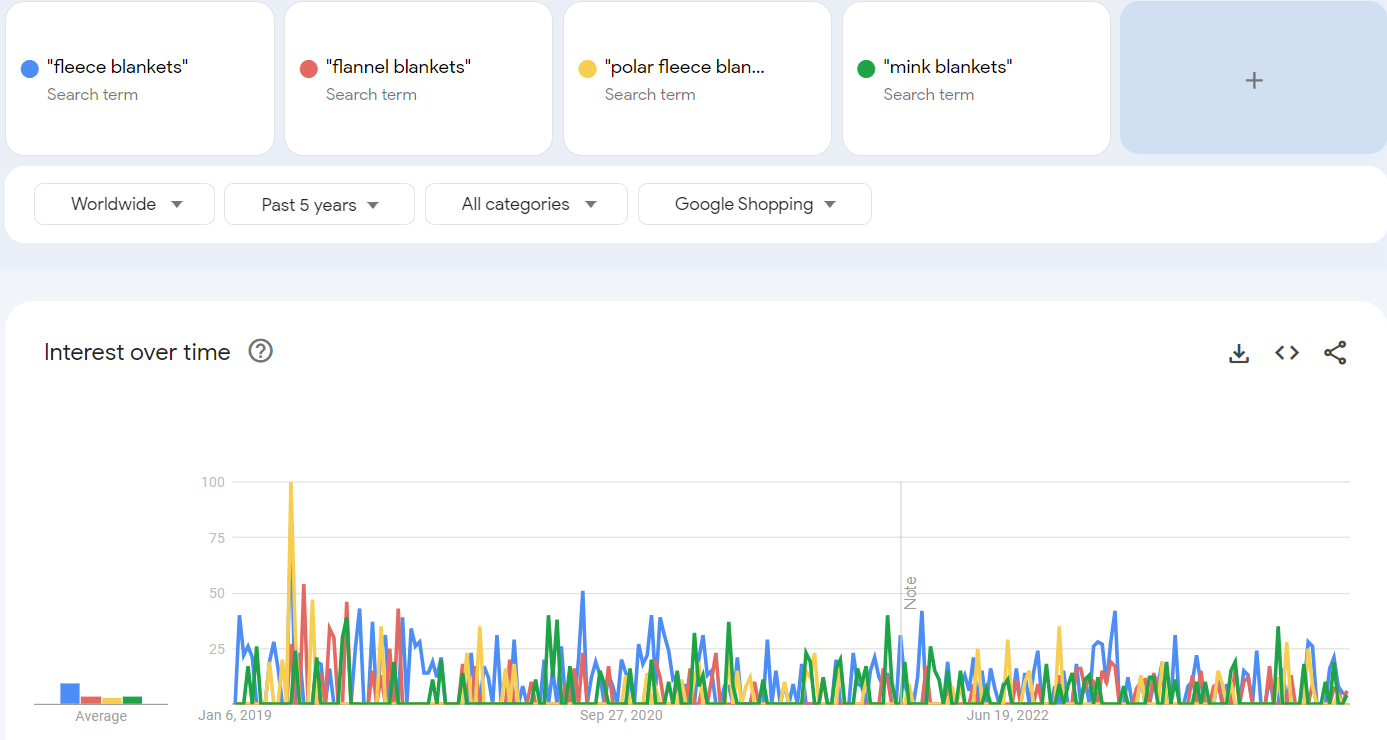
Fleece Blankets vs Sherpa Blankets vs Faux Fur Blankets vs Knit Blankets.

The 8 Synthetic Fiber Blankets Processing Techniques.
Printing.
Applying patterns or colors directly onto the surface of the blanket, which can be done through hand printing, machine printing, including digital printing techniques.

Embossing.
This process involves pressing patterns or textures into the blanket’s surface using heat and pressure, creating a raised and textured effect. Embossing adds a distinctive and sophisticated touch to the blanket, enhancing its visual and tactile appeal.

Cut Pile.
Cut pile refers to the technique of cutting the top of the looped fibers in the blanket to create a plush, even surface. This results in a soft and smooth texture that’s comfortable against the skin.

Jacquard.
Jacquard weaving is a method of creating intricate, patterned fabrics by controlling each warp yarn independently. It’s known for producing detailed and complex designs directly woven into the blanket, offering a high level of craftsmanship and quality
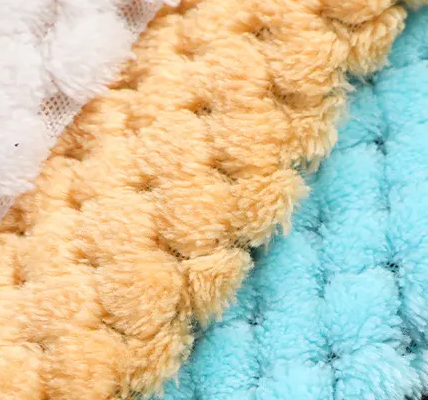
Foil Printing or Gold Stamping.
This decorative technique involves applying metallic or colored foil to the blanket to create shiny, ornamental patterns. It’s often used to add an elegant or festive look to the blanket.

Bubble Pressing.
Bubble pressing is a technique where the fabric is processed to create a bubbly, textured surface. This gives the blanket a unique and tactile 3D effect, adding visual interest and a playful touch.

Burnou.
In this technique, parts of the fabric are chemically removed to create a semi-transparent pattern against a more opaque background. Burnout or devoré provides a contrasting texture and a sense of depth, adding a luxurious and intricate look to the blanket.
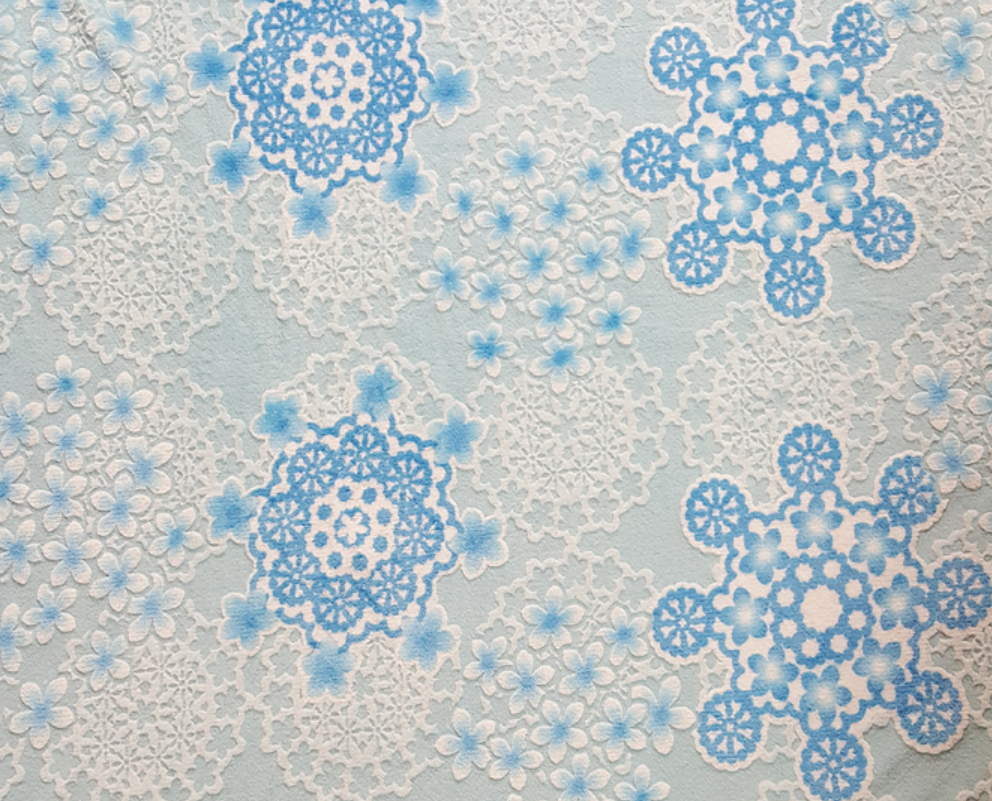
Back Printing and Cut Pile.
Back Printing and Cut Pile is a combination of printing and cut pile techniques, a new method that has emerged in the past two years.
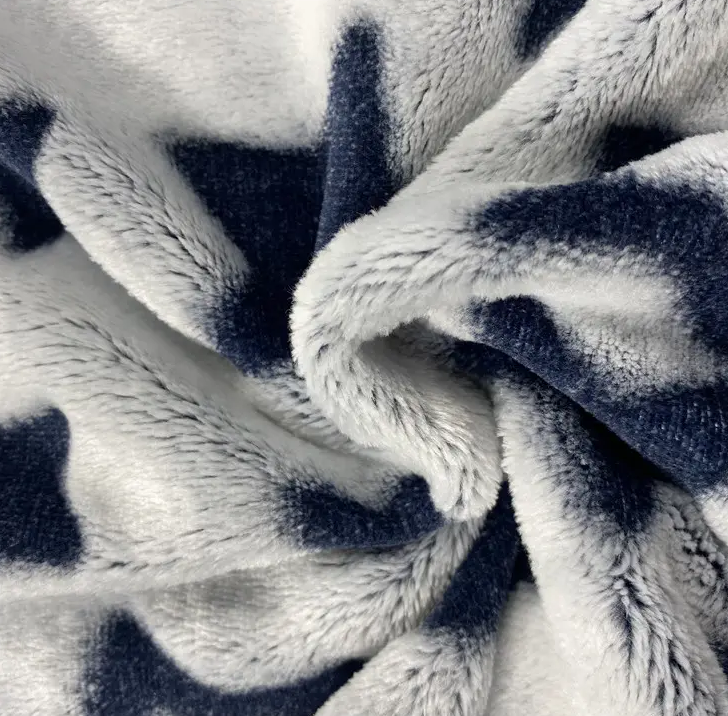
Five Continuing Advantages of Chinese Synthetic Fiber Blankets in the Global Market.
As global economic dynamics shift and production costs adjust, some traditional industries, including textiles, are indeed starting to move from China to regions like Southeast Asia. However, when it comes to products like blankets, China still maintains certain competitive advantages, which are reflected in the following aspects:
Mature Supply Chain and Production Base.
China boasts a comprehensive supply chain system, including raw material supply, production equipment, technological support, and logistics and transportation. This mature production environment makes large-scale production more efficient and cost-effective.
Advanced Manufacturing Technology.
With technological advancements, China has made significant progress in textile manufacturing technology, including automation, quality control, and the application of new materials. The application of these technologies has enhanced product quality and production efficiency.
Large-scale Production Capacity.
China’s production scale and capability still hold an important position globally and are capable of meeting large and diverse market demands. This scale advantage helps reduce unit costs and increase market competitiveness.
Rich Experience and Craftsmanship.
Over time, China’s textile industry has accumulated a wealth of experience and unique craftsmanship skills, including the design, weaving, dyeing, and finishing of blankets. This expertise is crucial in maintaining the uniqueness and high quality of products.
Flexible Market Adaptability.
Chinese manufacturers are typically able to quickly respond to market changes, adjusting product designs and production strategies to meet the needs of the international market. This adaptability allows Chinese products to better meet the needs of various consumers.
While Southeast Asia and other regions may offer competitive advantages in terms of labor costs and policy support, China’s comprehensive strength in blanket production, remains significant. As the global supply chain continues to evolve and the industry upgrades, China’s textile sector may continue to adjust and optimize to maintain its competitiveness on the international stage.
